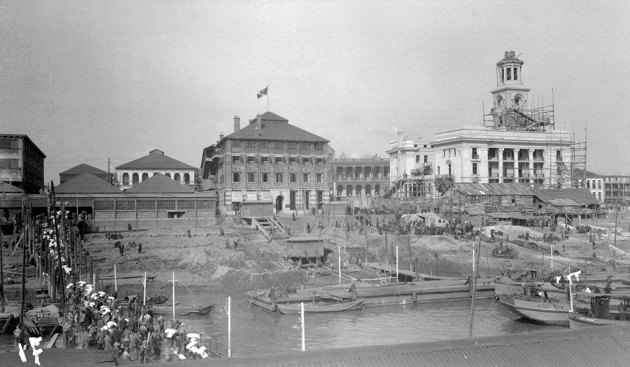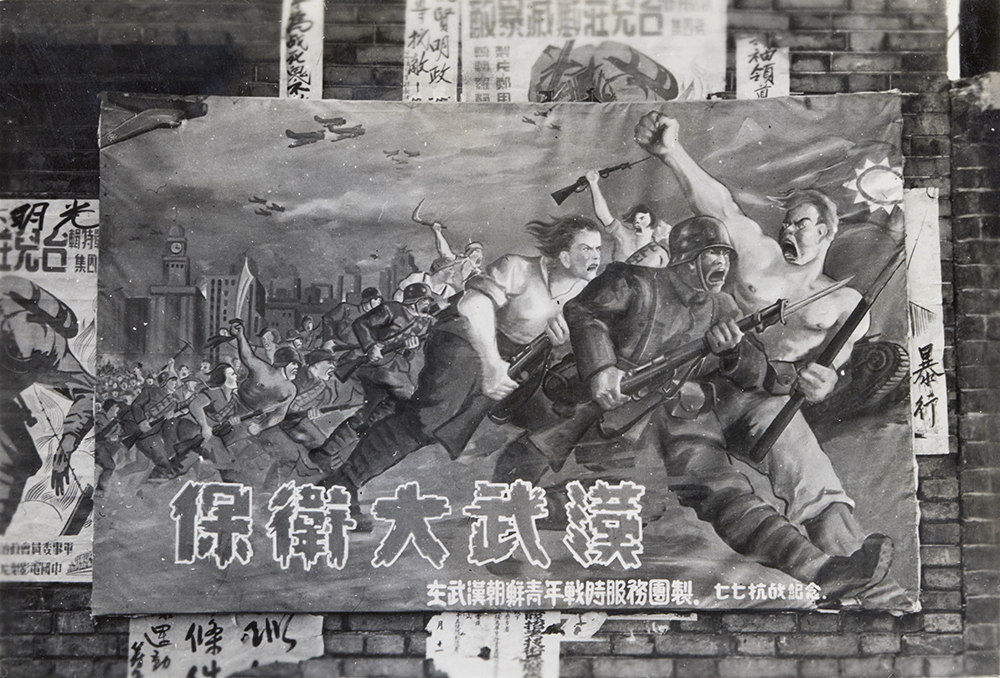Here is an extract from the introduction to the volume that Isabella Jackson and I have co-edited, and which has just been published by Routledge. I wrote this section by way of an experiment, and because it seemed worth exploring how narrative might best serve to help identify the wide range of issues that the study of these ‘flies on an elephant’s back’ provokes. This was Rhoads Murphey’s 1970 formulation about Shanghai, when he argued that the foreign presence there was irrelevant overall, because while the fly could ‘provoke a violent counter-reaction’, it could not ‘change the elephant’s basic nature’. Hmm. I also chose this form because I thought it might be fun. This is my first foray into fiction, although of course, it is all completely and utterly true.
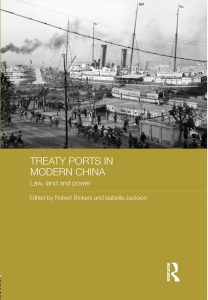 Nineteenth-century European traders — let us say in this case Britons, because the British pioneered the majority of such moves — identify a Chinese port city as geographically well-placed, or well-positioned within trading networks, and within a regional economy, and so lobby for its opening to foreign residence and trade. They petition their diplomats or politicians at home and in China, directly and indirectly, and make their case through their local and metropolitan press, emphasising perhaps the imperatives of free trade and the commercial opportunities presented by a new foothold in China. The context in which this develops is that of the ‘treaty system’, a term which describes the set of privileges secured by foreign powers in treaties negotiated with the Qing state in the aftermath of the 1842 Sino-British treaty of Nanjing, that ceded Hong Kong island to Britain, and opened five Chinese cities – Canton, Xiamen, Fuzhou, Ningbo and Shanghai — to British trade and residence. This treaty brought to an end bloody bouts of a military conflict that had its roots in Qing initiatives to suppress the contraband opium trade in 1839: the First Opium War. Subsequent agreements saw the establishment of the principle of consular jurisdiction of Britons in China, that is, extraterritoriality: they were subject not to Qing law, but to the jurisdiction of their consuls. A second conflict in 1857-60 had its roots in British and French frustrations with the implementation of the first agreements, and in apparent Qing challenges to the principle of extraterritoriality at Canton. The actions of the provincial officials were subsequently shown to have been in conformity with the basic principles of the treaties, but the conflict had already by then taken hold. As a result, new treaties and agreements opened further ports in north China and along the Yangzi River. Other foreign powers took advantage of these developments to negotiate their own agreements with the Qing, and most-favoured nation clauses ensured that privileges secured by one were applied to all.
Nineteenth-century European traders — let us say in this case Britons, because the British pioneered the majority of such moves — identify a Chinese port city as geographically well-placed, or well-positioned within trading networks, and within a regional economy, and so lobby for its opening to foreign residence and trade. They petition their diplomats or politicians at home and in China, directly and indirectly, and make their case through their local and metropolitan press, emphasising perhaps the imperatives of free trade and the commercial opportunities presented by a new foothold in China. The context in which this develops is that of the ‘treaty system’, a term which describes the set of privileges secured by foreign powers in treaties negotiated with the Qing state in the aftermath of the 1842 Sino-British treaty of Nanjing, that ceded Hong Kong island to Britain, and opened five Chinese cities – Canton, Xiamen, Fuzhou, Ningbo and Shanghai — to British trade and residence. This treaty brought to an end bloody bouts of a military conflict that had its roots in Qing initiatives to suppress the contraband opium trade in 1839: the First Opium War. Subsequent agreements saw the establishment of the principle of consular jurisdiction of Britons in China, that is, extraterritoriality: they were subject not to Qing law, but to the jurisdiction of their consuls. A second conflict in 1857-60 had its roots in British and French frustrations with the implementation of the first agreements, and in apparent Qing challenges to the principle of extraterritoriality at Canton. The actions of the provincial officials were subsequently shown to have been in conformity with the basic principles of the treaties, but the conflict had already by then taken hold. As a result, new treaties and agreements opened further ports in north China and along the Yangzi River. Other foreign powers took advantage of these developments to negotiate their own agreements with the Qing, and most-favoured nation clauses ensured that privileges secured by one were applied to all.
Gains secured never seem to have satisfied. So the fallout from a contingent event (a killing, usually) provides an opportunity for the foreign traders’ ambition to open a new city to be realised, for the opening of the port — let us call it Suidi – is one of the articles of the agreement or memorandum that wraps up the incident, and lowers levels of tension, at least until the next such event. A consular official is dispatched to oversee developments. Foreign entrepreneurs arrive quickly, perhaps even before the agreement is formally signed, and scout out opportunities. The consul, in collaboration with his understandably somewhat resentful Chinese peer marks out an area for exclusive foreign residence. (Resentful because his job will now get much more complex, for interaction with foreigners will lead to frictions, and he will be ill-placed between his superiors in Peking, and local elites, neither of whom will be satisfied with his handling of any incident). Under most-favoured nation clauses in their own treaties, other foreign powers are also able to take advantage of the opening of Suidi, and will dispatch their own officials. The first consul marks out a series of lots of land, and the traders hustle him to secure the seemingly best situated, on the waterfont, or with potential for development. Transfers from existing Chinese landowners are generally smoothly carried out, for agreed prices, though often graves or sites such as temples remain in Chinese ownership. There will be some dispute about what has actually been ‘opened’: the Qing authorities will say the harbour, the foreigners the city. A separate ‘ground’ outside the city proper by the waterfront will be the usual compromise. Perhaps another of the powers will negotiate a site as well, but this is a commitment to some level of state expenditure, which is never welcome, and if third power nationals can take happy advantage of the first power’s new concession, then that is often amenable to all. For the first contracting power, the British in our case (the Qing being the second), it means more bodies on the ground, which will be welcome.
The Maritime Customs Service appoints an officer to work with the local authorities to prepare port regulations and a mechanism for the establishment of trade. Most likely he will also work with the same authorities to prepare the bunding of the waterfront, and foreign-style properties are quickly built, allowing the port pioneers to move ashore from the ships they have been living on, or to move out of Chinese housing that they might have been able to rent (sometimes, however, this has not been possible, because of local resistance to the opening of Suidi). The port is added to existing passing steamship routes, or a shipping firm might essay a new line. There may be some disappointment, for the local Chinese traders often prove to have sufficient existing connections into the economy of foreign imports and exports, but something will be made to stick. Suidi, like other ports, will develop its own rationale and place within the hierarchical network of treaty ports across China, which are linked into regional and then global networks of communications, trade and the circulation of people, goods and ideas. The city will be written up in surveys of the treaty ports of China. Its entry in the annually-published Chronicle and Directory of China, Japan etc. will commence with a description of the growth of the foreign community and highlights from its history. It will represent itself through the regular dispatches to the editor of the North China Daily News in Shanghai of a budget of local news. Early on a photographer will pay a visit, and photographs of the lawns on the Bund and the buildings that the companies build on their lots will start to circulate; later ones will reach far and wide as postcards and will be collected for the stamps and postmarks affixed to them by the consulate post offices that are soon established.
The small foreign community quickly finds it needs to identify a site for a cemetery, and will look also — for this is just as pressing — for a location for a racecourse. Suidi’s Chinese residents will take to the races, which will become a big annual or twice-yearly event, providing opportunities for eating, watching entertainers, and for gambling. Some nearby hills or a seaside resort will doubtless provide an opportunity for securing respite from the summer heat, as foreign residents rent temples or even, eventually, acquire sites on which to build bungalows. They will have established a club, perhaps with a reasonable library in time, and Suidi’s lower class foreign men – Customs Tidewaiters – might have their own, or make use of the taverns or hotels, or skittle alley, that might be established. A newspaper is started; a masonic lodge established. Missionaries, who have also dashed in at the start, have established chapels and perhaps one will officiate at services for the foreign population. The new roads and jetties need to be maintained and the landrenters – for technically all land remains the property of the emperor and the foreign lot-holders are simply renting it on (generally) 99-year leases – elect or select annually a committee to oversee this, paying a small tax to provide the funds. In time this looks like, acts as and talks about itself as a Municipal Council, employing a police force, public health officials, perhaps in time running a school, and a public works department. It attempts to build a suitable system for sanitation in the concession for which it is responsible, but as none of the lot holders ever want to pay much by way of municipal rates – and as they form a small, closed circle who take it in turns, mostly, to run the Council – such work is underfunded and often rudimentary. Regularly, the concession will flood, because inadequate attention has been paid to local topography. The Council will adopt the formal Chinese title ‘Suidi 工部局‘ (gongbuju) – Board of Works Bureau’ – an awkward name copied from that of the Shanghai Municipal Council. Note that it blithely, and thoughtlessly, appropriates the whole of Suidi into its name, for in English the sense of foreign possession will be clear in the designation ‘British Municipal Council of Suidi’. Local people will call it the ‘foreign waterfront’. The relevant national Consul might have, ex-officio, a place on the Council, or the Land Regulations that he has promulgated will reserve to him the right of final approval for the decisions and budget of the Council, but each set of regulations turns out, on inspection, to be subtly different from every other one, for all have specific local characteristics.
Suidi will prove as brittle a site as any other. The Customs and a foreign shipping firm will argue over the siting of a jetty; the appointment of Sikh policemen will lead to a riot; an anti-dynastic secret society will launch an uprising; local elites will clash with the highest Chinese official in the port – the Daotai — over what they perceive to be his inadequate response to foreign impositions; missionaries at a station in the hills will be the subject of a violent incident, as people take fright at rumours of cannibalistic activities in a mission children’s home. Men will fortify the Council building as a redoubt, and for a while will sleep with revolvers close to hand. Foreign gunboats will call into the port regularly, and linger when there is tension. The Council’s pool of foreign recruits for its posts is not a large one, and it must make do with men who have, it is clear, failed everywhere else, and so whose qualities are such that they will cause ‘incidents’ through their casual or thoughtless violence, their laziness, insensitivity, or stupidity (although none of these qualities are exclusive to these men alone). Although initially planned as a zone for exclusive foreign residence, times of crisis, or simple rational choice, mean that Chinese businessmen, initially, and then their families and others, seek residence in the concession. The Land Regulations will be tweaked to allow this, but to disallow any representation on the Council. Suidi’s trade grows, and land values increase, and the Council looks for more space, securing an extra-concession district through land purchases and road building projects, which brings with it an existing Chinese population that cannot now be cleared out.
Intra-colonial tensions will not be absent either. Conflicts in Europe will give rise to fractures locally, and rising powers will assert forcefully their own rights within Suidi, for access for firms run by their nationals to an advantageous slice of the Bund, or exemption from this tax or that. In the 1890s a crown prince will visit on a tour of the ‘east’, and open a new club for his subjects as a choir sings anthems, the building behind them smothered in national flags. There will be a grand feast, and platitudes and loyal toasts from the empire’s most distant, but no less loyal subjects. This tour will be the subject of an important book stating a case for a new and aggressive forward policy in China. A new concession at Suidi will be demanded, adjoining the existing one. National prestige will be associated with a good site for an impressive consulate, or wharf, while the proportion of foreign trade in the hands of this nationality and that one will be closely observed. In the late 1890s and afterwards, diplomats will argue that their own nationals employed in the Maritime Customs should be appointed to this port or that one to reflect their own predominance in local trade. Occasionally it might look as if the British and the French, or the Russians and the British, might come to blows over such matters. In general these disagreements will be smoothed over. All the foreign consuls locally work together as a body in their dealings with the relevant local official – the Daotai and his successors in the last days of the Qing and during the republic — the longest serving amongst them acting as their spokesman and chair.
The ecology of foreign life in Suidi will become more complex as time rolls on and the community grows. At first the foreign men are all single, and find companions locally in relationships that are simply transactional, but some of these will last, and become formalized, and some relationships with Chinese women are genuine from the start. Children of plural heritage will be born. Missionaries may run a home for them, but some men, better off, may send their children overseas, or find them a job in the Customs, or look after them financially in their wills. Over time more foreign women will become part of the community. Some such families will stay locally for two or three generations: this one associated with the newspaper; that one with a niche trading firm and the club. The cemetery will fill, first with adult males, then with women and children as well. Their gravestones will mark out the most decidedly foreign-looking site in the city, yet as Suidi develops, more and more foreign-style buildings will be built outside the concession areas, which, as a result, start to look less and less anomalous.
Consuls will record births and deaths, and officiate at marriages. Lower class foreigners will marry Chinese, sometimes young women from the brothels; in the Republican period they will marry Russians. Missionaries will marry each other. Most foreigners of better social standing will marry elsewhere, usually back ‘home’ on their periodic long leaves from China (which on the whole they alone can afford). Most residents will not stay beyond a single generation, leaving for ‘home’ or elsewhere in the worlds of empire and global migration when they can afford to, often, though, with a lingering sense of exile from the sweet comforts of the colonial style life they have enjoyed in Suidi. They will forget their often profound, debilitating boredom. Loyal servants and civilized, cultured connoisseurs of the ceramics the better-off foreigners like to buy are often forefront in foreign memories. Such stories might be worth a column in a newspaper in New South Wales, or wherever they end up, or a public talk or two. Men working for the bigger China firms, tobacco and oil companies like British American Tobacco and the Asiatic Petroleum Company, trading houses such as Jardine, Matheson & Co., shipping lines (the Peninsular and Orient) and banks (Hongkong and Shanghai, Standard Chartered), will have been moved around several ports during their careers, gaining experience, cutting their teeth on working in different markets. At Suidi their eyes will usually be on a bigger prize: Tianjin or Shanghai, most often. They will complain of the effects of living in Suidi on their health and they might leave a child buried in the cemetery as they move on. They will drink heavily, wherever they are posted.
Private tragedy, happiness, and everything in between will find its way into foreign lives in Suidi. The world of colonialists – and Suidi is a site within that world, though China is not a colony and neither are its treaty ports – is a world of success, and failure, and all the various trajectories though life that a man and a woman can take. In the treaty ports, however, perhaps there is always more of the latter – failure — than the former: the China coast is a shore of disappointment. Corruption, crime of other sorts, and hopes unrealised will be features of foreign life at Suidi. The consuls will convene their courts, and their jails will have inmates, though these prisons might be a little makeshift sometimes, or else, they will borrow each other’s lock-up. Sometimes a more serious case is referred to higher courts in Shanghai. Some traders will always game the system, running what British consuls called ‘lie hongs’, fronting Chinese businesses as their own (for a fee), and claiming consular support in disputes with Chinese officials. Sometimes when one consul refuses, they will try another, and go court shopping too, claiming different nationalities. Perhaps a cannier trader has secured the honorary consulship of a nation that has little of a China presence, which is usually advantageous to him. The consuls will try to weed these front-men out, but will not always succeed, and meanwhile the original rationale of the Suidi concession as a residential site exclusively for foreigners has been so compromised that it is now simply a mechanism for foreign lot-holders to secure Chinese tenants: for a concession proves a useful place for resort in unsettled times, and China’s treaty century is a century too of war, civil war, rebellion and invasion.
The concession is rooted in the city, but in the wider network of treaty ports. Suidi’s economic growth is multi-layered. Parts of the commerce of the city and its hinterland are integrated into a new layer in China’s national economy – a treaty port economy – and some through that also into an east and southeast Asian economy and a global trade. As food processing technology and refrigeration develop, Suidi produce is consumed thousands of miles away along oceanic shipping routes. At the same time, what is initially an exclusively foreign shipping infrastructure captures some of the existing flow of goods: the foreign presence is as much interpolation, as innovation. The systems and processes of the Maritime Customs Service are designed to facilitate this, but many of the port’s Chinese traders continue to ship goods under the Native Customs flag, and the published annual returns on Suidi’s trade that the Customs issues are only a guide to the city’s commerce, not an accurate record of it.
Underpinning all of these developments is a complex and evolving legal framework, which was never entirely water-tight, for human ingenuity means that loopholes are exploited, and the law of unintended consequences is very much present. It is grounded in agreements about land transfers, negotiated locally, in most cases, and in the presence, application, or threat, of military violence, as well as other forms of power. In the port the gunboats come and go. Naval landing parties on occasion parade the Suidi Bund. Local foreigners form an ad hoc ‘volunteer contingent’ at one critical moment, taking their protection into their own hands. Suidi is entirely a product of an unequal power relationship, but it was also hardly planned to develop as it did. The growth of such semi-colonies – for such they seemed to outside observers, and such they were often assumed to be by those who experienced them – lies outwith the bilateral national treaties signed by those with plenipotentiary powers, though it was a consequence of those, and facilitated by them.
This is one version of a treaty port’s history. But there is of course another way of looking at it, in another language. This is a story of the dispossession of the original landowners, and while market rates were generally given for the initial transfers, there may have been disagreements, and perhaps sharp ones about continued access to land that held graves, or temple sites. Nonetheless, the opening of a treaty port always provided opportunity: for local traders to collaborate with the incoming foreign merchants, although this might also be complicated by the fact that the foreign firms already had their compradors and Chinese agents. There were opportunities to provide services for the incomers, as servants or shopkeepers. In the private economy there were opportunities for pimps and brothel keepers. As the concession developed its institutions there were employment opportunities in the police force, public works and other departments, but there was little scope for much beyond menial or routine work, overseen by European men who could not speak Chinese. The medium of communication was pidgin English, and gesture, sometimes (too often) a hand or a foot. The foreign companies needed labour, and so there were opportunities for contractors. Other Chinese entrepreneurs also arrived, perhaps from communities overseas in foreign colonies, who were themselves able to benefit from extraterritoriality in China, as colonial subjects, though sometimes to the consternation or against the opposition of consuls. Others gladly accepted them, for it gave them a larger presence of their own nationals to boast about in negotiations in Beijing.
The early photographs of Suidi, in particular, will have exploited the stark contrast between the streets and buildings of the existing city, and the new order built in the concession, with the smart lawns, the Bund, and the foreign-style company offices and warehouses that adopted the standard vernacular architectural forms of colonial southeast Asia, verandahs included. For Suidi’s residents, and for incomers from its hinterland, this was a window on the world beyond China. They already knew that such places had been built in Shanghai or Hong Kong and may have seen pictures in Dianshizhai huabao, or other pictorial publications, but now they could see for themselves what a foreigner looked like, and how he lived. If not exactly a site for tourism, Suidi’s foreign area was always a site for curious observation. This could lead to tensions, as concession police enforced rules and regulations about where Chinese could or could not go, or could or could not sit, or zealously prevented ‘gawping’ and ‘staring’, more often than not with a poke, a shove or a kick. Municipal by-laws regulated and penalized simple actions in the name of public health or public decency that meant that visitors found themselves hauled off to a court or roughly handled for relieving themselves in public, or sitting on a bench on the Bund or a pavement. Sometimes a policeman poked harder than he would later admit, and a man died. Chinese people were made to feel strangers in their own land; and likewise Suidi’s people foreigners in their own city. Offences such as ‘returning from deportation’ can be found in the annual reports published by the Council. Moreover, until the 1920s Chinese were prohibited from using the lawns and benches on the bund, which were reserved for ‘the exclusive use of the foreign community’.
Suidi is nonetheless a large city, with its own challenges, conflicts and developments, and it might take little cognizance of its growing foreign suburb, except that in time it becomes a key point of interaction between the city and the rest of China. Here the shipping lines stop, or trade goods come in, so it is a point of transit. Young men and then young women heading off to the new universities pass through, and in their memoirs will later note their outrage about the racist discrimination they encountered as they traversed this part of their own country. The local Chinese Chamber of Commerce will start more and more often to challenge the actions of the consuls, concession council, or the trading firms. There will be disputes over access and the siting of jetties. During periods of upheaval the concession council might build gates to regulate access, and once built such barriers would rarely be dismantled. Practical matters and the rising tide of nationalism will see more and more challenges to the pretensions of the concession authorities, and a simple incident, such as the squalid use of force by a policeman against a Chinese visitor, could cause a riot, a boycott, in time a formalized lobby demanding the removal of gates and the retrocession of the concession.
During times of revolution and civil war, nonetheless, people seek refuge under the shelter of foreign guns, but as well as being a place of resort, Suidi will have become a site of tension and conflict. At some point the diplomats will have had enough, and will decide that it is now more trouble to retain than it is to surrender, and that the triumph of Chinese nationalism in the mid-1920s is the opportunity to match deeds to words, for they had long dealt in platitudes about recasting bilateral relations with China to assume a more equal form. In fact they have no choice: they have to start to negotiate face-saving forms of surrender. So a retrocession is agreed, while elsewhere seizure during the nationalist revolution is recognized post-facto, and to Suidi comes a charming, foreign-educated Chinese administrator who has been appointed to run what is now the municipality’s First Special Administrative District: time, long-term foreign residents say, to be SAD. The sky, however, does not fall on their heads; water still flows from their taps; rubbish is more or less collected as ever; law and order do not break down, and their life continues much as comfortably usual until the Japanese assault on China during and after 1937.
Even before the retrocession there was significant change in the city. A protestant mission had established a college outside the concession, which had by the early 1920s became the school of choice for Suidi’s growing self-consciously ‘modern’ families. Student activism in the heady years after 1918 causes the missionaries to transfer more and more of the control of the college to their Chinese colleagues, and to local notables, a development finalised by the new education laws of the National Government. Other such foreign institutions outside the concessions – hospitals for instance – also have to adapt, and change at least nominal ownership. More widely the new laws of the National Government seep steadily into the concession, as even institutions there start to acquiesce in the face of its growing power and confidence. In another way, urbanites will colonise the cabarets, cinemas and hotels of the concession, which will merge into the city’s landscape of leisure. Suidi must not be defined by its concession. Its own development paths might show a consciousness of the practices and appearance of this detached zone, but urban reform across China has an autochthonous history.
The retrocession agreement pledges to honour pensions of foreign staff and commitments to municipal bondholders will lapse with the onset of the Pacific War, and diplomatic archives overseas will house lost claims for compensation. The rump foreign community will be displaced by the war, having been whittled down through the years of uncertainty during the conflict with Japanese. By 1949 the largest surviving community is that of the missionaries, and although consuls have some remaining secular foreign nationals under their charge, these are most likely to be outnumbered by Eurasians or the Chinese wives of their nationals who have been abandoned by their husbands, and by overseas Chinese. The consulate will close; its archives will mostly not have been kept, although its correspondence with the court in Shanghai and the Minister in Beijing will be retained. In amongst that will be caught much of the transitory Suidi palaver of the previous decades, and some of the official publications of the concession. If they survive the war, the Council’s archive will end up as part of the city government records. They will linger there, closed to readers, because deemed too sensitive, or simply because of a low priority accorded foreign-language documents.
On the whole, the foreign presence will be forgotten, certainly overseas, not least as the former concession staff are dispersed and pass away. Some of the built heritage will survive intact, but the widest known legacy will be a cultural one. A prominent European novelist will have come through in the very early 1920s and thereafter penned a couple of quite caustic pieces set amongst its foreign community, which linger on the pages of an impressionistic collection of Chinese Sketches, though Suidi is not named. An American journalist, the child of missionaries, will write a novel about a love affair between a foreign doctor and a Chinese woman, set against the backdrop of the Nationalist revolution. A missionary child will later self-publish a memoir about her life there, and the work of her parents. Perhaps an echo of the city’s pre-pinyin era name will survive in a phrase or the name of a type of its signature product, the one that drew the Europeans to the city in the first place. In China, Suidi local history studies give space only to the points of conflict and of resistance by the people of the city against the concession authorities. A book of documents highlighting this local degradation of China’s sovereignty will be published, and the city’s history museum will include a section on the concession with a diorama reconstructing a scene from the treaty port era. But when the ‘reform and opening up’ era starts to get underway in the 1980s the city’s experience will be re-examined for data and lessons about how that process might unfold. Later a growing local heritage initiative might restore some of the surviving buildings, or create a new museum display about the city’s cosmopolitan links in Suidi’s former 1920s Customs House, or about the overseas Chinese who came to trade in the city.
All of this actually happened, somewhere in the treaty ports in China, although it is a composite. It is an unexceptional colonial tale, with Chinese characteristics, or it is more accurately a modern tale, of a globalizing world in which criss-crossing developments and circuits of power and empire brought to China an improvised system which created such sites of sometimes frantic, sometimes languid, sometimes contentious, but generally autonomous and unintended activity. Most things, of course, are never meant. Underpinning it all, however eccentric it seemed, however far outside stronger currents of colonial power, were real issues of the deployment and use of law, land and power.
My thanks to Isabella Jackson for her comments and suggestions.

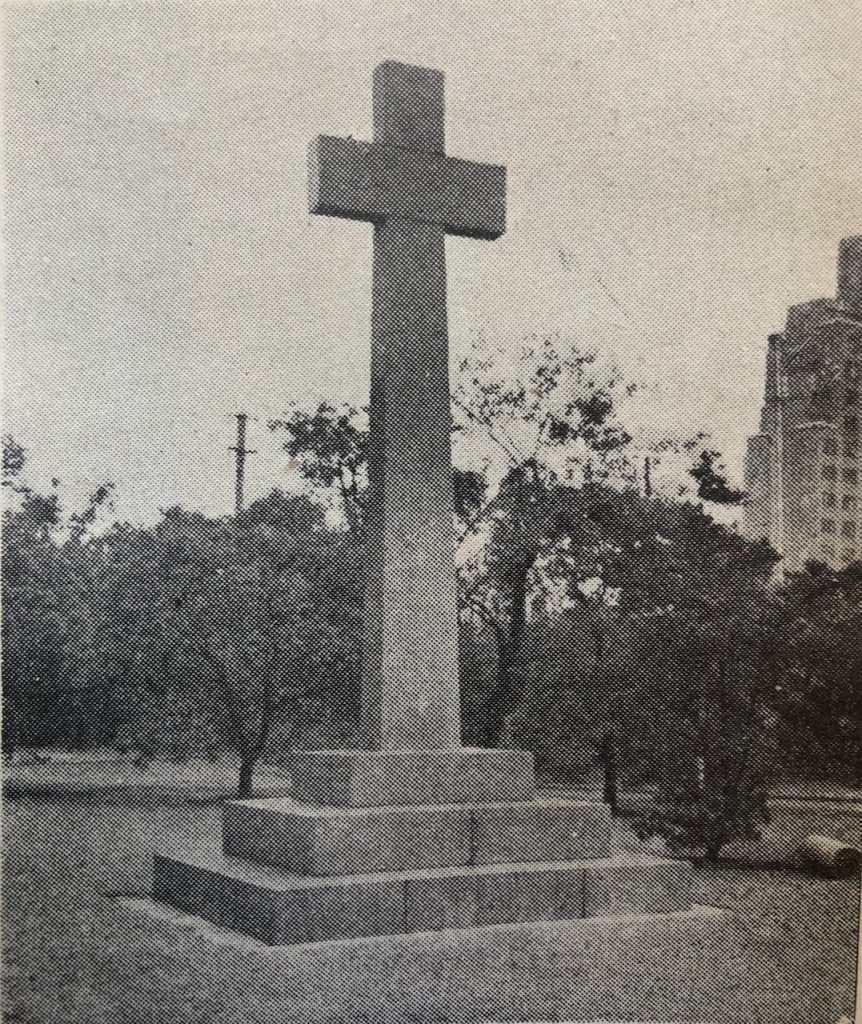
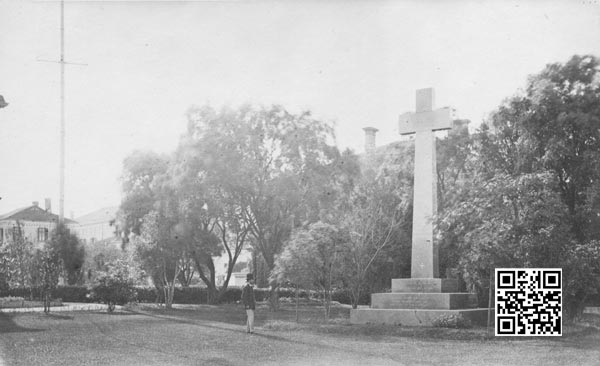


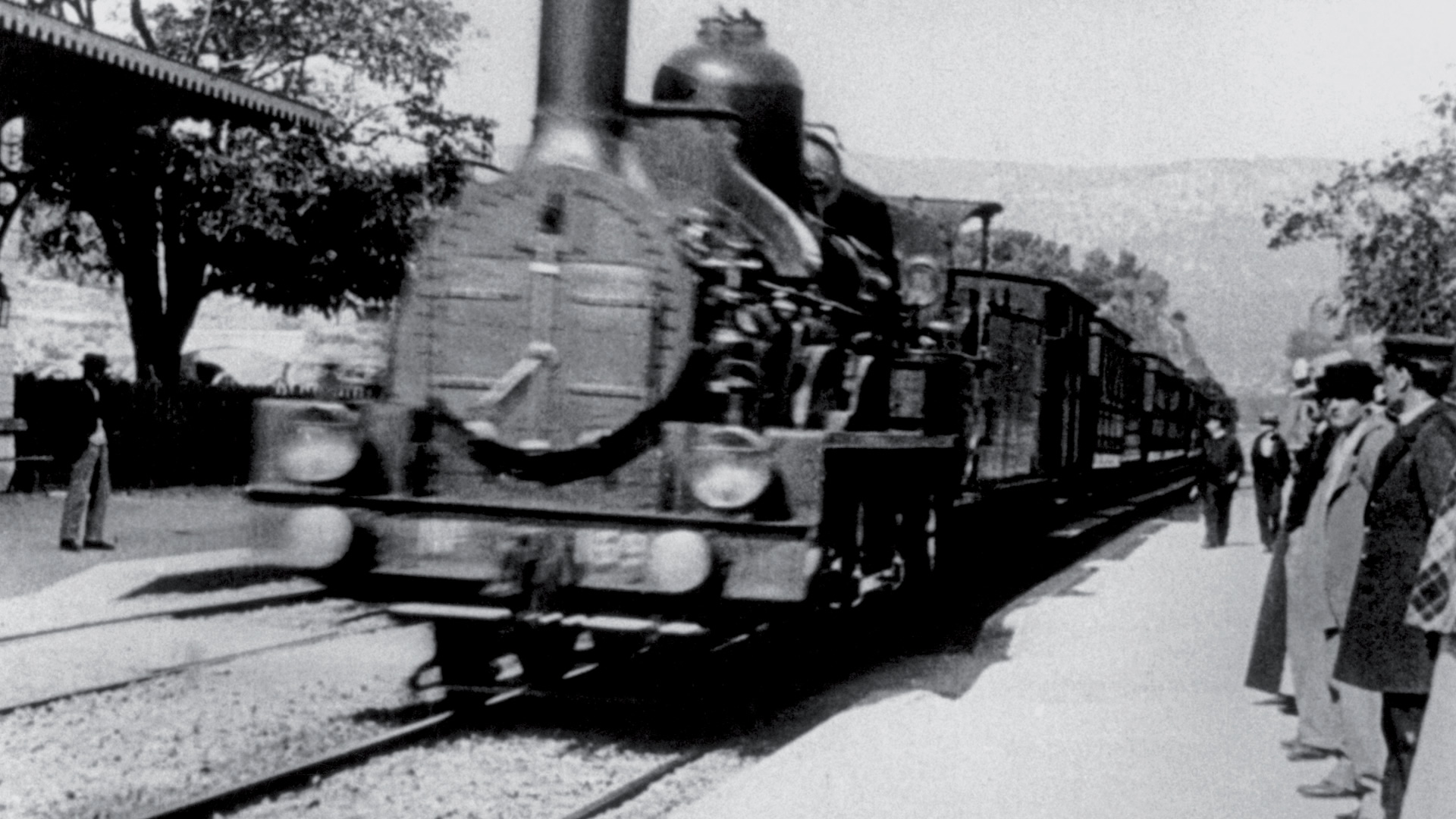
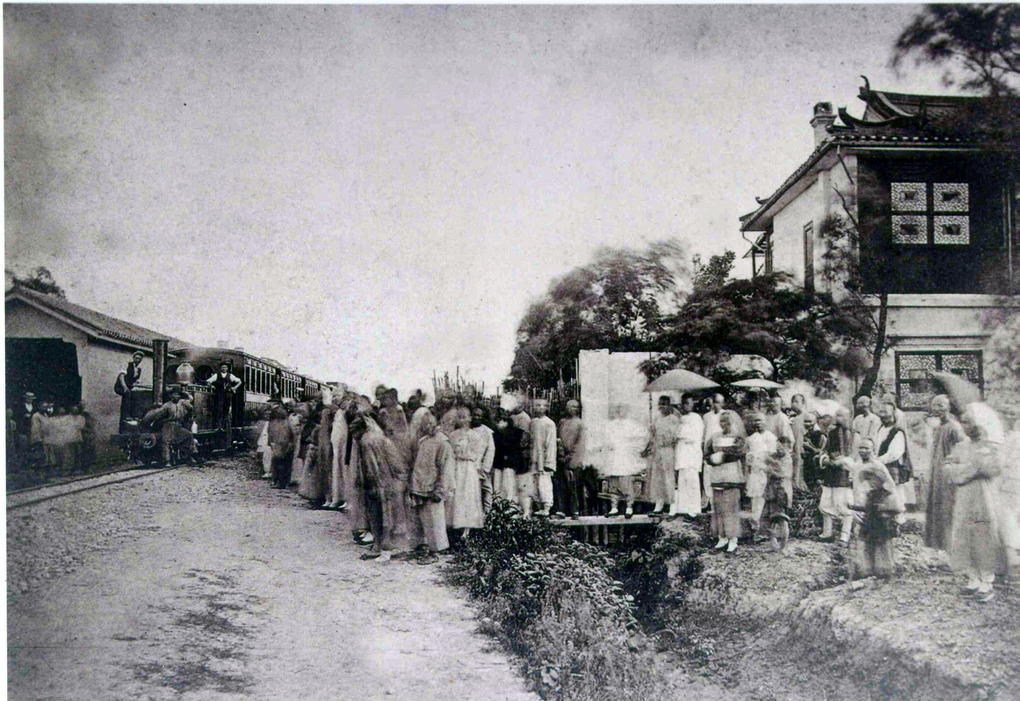
 The city of Wuhan is actually formed of what were historically three cities: Wuchang, on the right bank of the Yangzi, opposite the mouth of the Han river that enters it from the north; Hanyang, on the opposite shore, west of the Han river mouth, and Hankou – written in the past as Hankow – to the east of the Han river. These cities have now grown together into the municipality of Wuhan. It has been a centre of revolutions, of a government in flight, and of international trade.
The city of Wuhan is actually formed of what were historically three cities: Wuchang, on the right bank of the Yangzi, opposite the mouth of the Han river that enters it from the north; Hanyang, on the opposite shore, west of the Han river mouth, and Hankou – written in the past as Hankow – to the east of the Han river. These cities have now grown together into the municipality of Wuhan. It has been a centre of revolutions, of a government in flight, and of international trade.
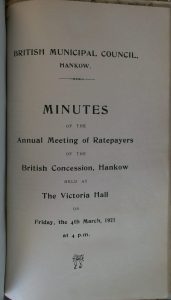
 Foreign flags once flew there. After 1861 a slice of Hankou on the Yangzi riverbank was controlled by the British, and in time other neighbouring slices adjoining it by Russia, France, Germany, and Japan. In Hankow’s British Concession a British Municipal Council ran a police force, employed British nurses in its hospital and British teachers in its school, and oversaw a militia, the Hankow British Volunteer Corps. The Council laid down roads, collected property taxes, and documented its activities in a voluminous printed annual report. Hankow’s Britons sailed home to join up in the First World War, and those who died were commemorated on a now long-ago removed war memorial on the riverside bund, which was unveiled on Remembrance Day, 1922. To the northeast of the city a fine race-track was laid out, and foreign residents and Chinese alike flowed along the road on race days to join the festivities, watch the races, and of course to gamble. The track and surrounds ‘might well be in the heart of surrey’ remarked a visitor in 1938. Britons were born in Hankow, were married there or found partners there, and were interred there in the foreign cemetery. The city’s locally-printed English newspapers published notices of these life events. The descendants of Hankow unions live across the world. They might be your neighbours.
Foreign flags once flew there. After 1861 a slice of Hankou on the Yangzi riverbank was controlled by the British, and in time other neighbouring slices adjoining it by Russia, France, Germany, and Japan. In Hankow’s British Concession a British Municipal Council ran a police force, employed British nurses in its hospital and British teachers in its school, and oversaw a militia, the Hankow British Volunteer Corps. The Council laid down roads, collected property taxes, and documented its activities in a voluminous printed annual report. Hankow’s Britons sailed home to join up in the First World War, and those who died were commemorated on a now long-ago removed war memorial on the riverside bund, which was unveiled on Remembrance Day, 1922. To the northeast of the city a fine race-track was laid out, and foreign residents and Chinese alike flowed along the road on race days to join the festivities, watch the races, and of course to gamble. The track and surrounds ‘might well be in the heart of surrey’ remarked a visitor in 1938. Britons were born in Hankow, were married there or found partners there, and were interred there in the foreign cemetery. The city’s locally-printed English newspapers published notices of these life events. The descendants of Hankow unions live across the world. They might be your neighbours.
